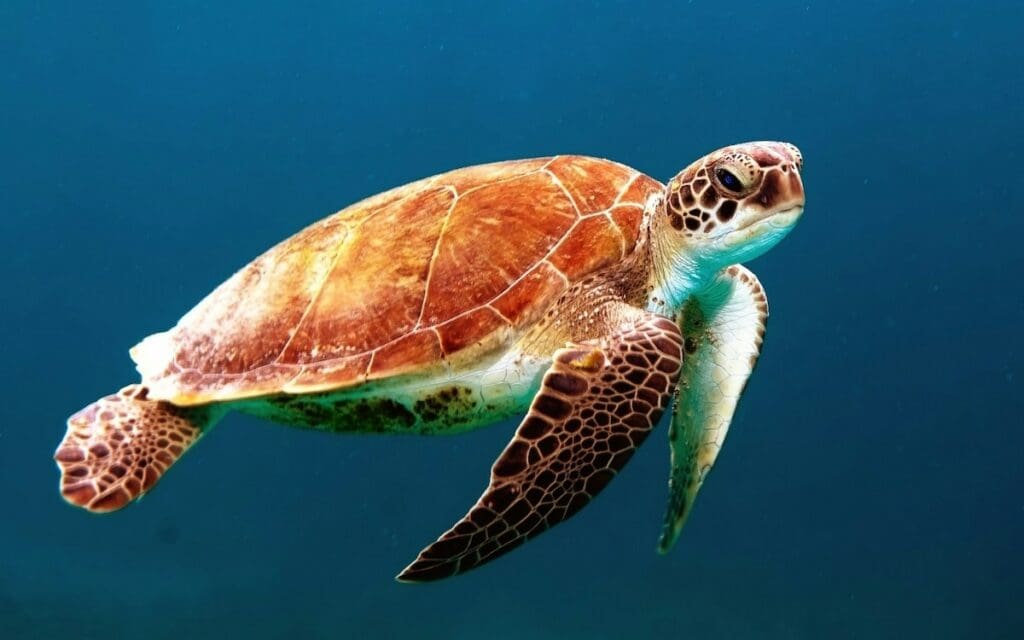A Pro’s Guide to Reef Snaps & Tips

Underwater photography allows enthusiasts to bring the vibrant world beneath the waves into view for all to appreciate. Akumal, with its crystal-clear waters and abundant marine life, presents a spectacular stage for photographers to capture the magic of the coral reefs. This peaceful village on the Yucatán Peninsula of Mexico is known for its pristine beaches and is often hailed as a haven for sea turtles, making it an ideal location for underwater imaging.
To successfully photograph the underwater ecosystems of Akumal, photographers must equip themselves with the right gear. Cameras and housings designed to withstand the pressure at various depths are essential, along with lights and lenses suitable for the marine environment. While some equipment is built for the amateur looking to document their holiday, professional-grade gear enables advanced shooters to create stunning images worthy of any gallery or publication.
In addition to equipment, knowledge of diving and underwater photography techniques is crucial. Akumal offers a range of courses that provide valuable insights into capturing images beneath the surface. These educational programs help photographers understand the complexities of underwater light, composition, and behavior of marine life. Moreover, with a plethora of dive sites, each offering unique topographies and biodiversity, photographers can find endless opportunities to hone their craft and document the enchanting underwater world.
Essentials of Underwater Photography
A solid grasp of the equipment and techniques is vital for capturing the enchanting underwater scenes at Akumal’s coral reefs.
Choosing the Right Equipment
Begin with a waterproof camera housing, tailored to protect against the pressure and corrosive saltwater. Prioritize housings that offer full control over camera functions. Highly recommended are cameras that support RAW format for superior editing flexibility. Essential gear includes:
- Camera and Housing: DSLR or mirrorless camera with a dedicated underwater housing.
- Lenses: Wide-angle lenses for vast reef scapes; macro lenses for small marine life.
- Strobes and Lights: At least one strobe to illuminate subjects; continuous lighting aids focusing.
- Accessories: Arm and tray system for stabilizing camera setup; float arms to adjust buoyancy.
Understanding Light and Composition
Underwater light behaves differently, with colors dissipating quickly as depth increases. Utilize natural light effectively by shooting within 20 feet of the surface during sunny conditions. Composition rules still apply; use the Rule of Thirds to structure engaging shots and look for patterns and textures for visual interest. Tips for light and composition include:
- Natural Light: Shoot near the surface and use sunlight angles to enhance texture and color.
- Artificial Light: Use strobes or video lights to restore true colors at depth.
- Composition: Apply classic techniques—leading lines, framing, and the rule of thirds.
Managing Buoyancy for Steady Shots
Stable camera work is essential for sharp images. Photographers should master their buoyancy to hover effortlessly and avoid disturbing the reef ecosystem. A steady hand is critical to prevent motion blur and to ensure crisp photos. Points to consider:
- Buoyancy Control Device (BCD): Use your BCD to achieve neutral buoyancy.
- Practice: Spend time practicing buoyancy in different conditions to reduce camera shake.
- Fins: Use fins to position yourself carefully without using hands, keeping them free for the camera.
Photography Courses and Certification
Gaining proficiency in underwater photography at Akumal requires a blend of specialized education and official certification. Photographers should engage in courses tailored to underwater techniques and obtain certification to ensure a safe and environmentally respectful diving experience.
Selecting Specialized Courses
When selecting courses, photographers should prioritize those that offer hands-on experience in the real-world conditions of Akumal’s reefs. Such courses often cover:
- Camera handling: How to manipulate camera settings while submerged.
- Lighting techniques: Utilizing natural and artificial light underwater.
- Marine life photography: Approaches to photographing fish and coral without disturbance.
Local dive shops in Akumal typically offer courses ranging from beginner to advanced levels. It’s beneficial to check the course curriculum and instructor qualifications.
Earning Underwater Photography Certification
Underwater photography certification ensures that photographers are competent in both diving and photography. Key certification points include:
- Diving Skills: Certification teaches how to maintain buoyancy and minimize sediment disruption.
- Environmental Awareness: Understanding and preserving the fragile coral ecosystems.
- Equipment Proficiency: Mastery of underwater housings and strobes.
Reputable organizations like PADI (Professional Association of Diving Instructors) or NAUI (National Association of Underwater Instructors) offer these certifications. It requires successful completion of coursework and in-water training.
Dive Spots in Akumal
Akumal is renowned for its stunning underwater scenery, with numerous dive spots that are perfect for photographers looking to capture the vivid marine life and coral formations. Each location offers distinct features and marine habitats.
Akumal Bay
Depth Range: 5-25 feet
Visibility: 50-100 feet
- Highlights: Home to sea turtles and a variety of fish.
- Access: Easily accessible from the shore.
Akumal Bay is known for its shallow waters and abundance of sea turtles, which makes it ideal for both beginners and experienced photographers. The bay’s clear waters provide excellent visibility, offering an opportunity for high-quality underwater photography.
Half Moon Bay
Depth Range: 10-30 feet
Visibility: 30-90 feet
- Highlights: Coral species, colorful fish, and occasional eagle rays.
- Access: Shore entry or short boat trip.
Half Moon Bay features a diverse coral reef system and a lively fish population. The water clarity can fluctuate depending on weather conditions, but when conditions are right, photographers can capture a vibrant underwater tableau.
Yal-ku Lagoon
Depth Range: 5-15 feet
Visibility: 20-50 feet
- Highlights: Tranquil waters with a mixture of fresh and salt water.
- Access: Entry fee required; shore access.
Yal-ku Lagoon offers a unique environment where freshwater meets saltwater, creating a distinct clarity and a variety of marine life. It’s particularly good for macro photography, capturing detailed images of small aquatic species. The lagoon’s calm waters make it a favorite among photographers who prioritize stability and clarity in their shots.
Safety and Conservation Practices
When engaging in underwater photography in Akumal, photographers must prioritize the safety of both themselves and the marine environment. Essential practices should be integrated into planning and executing dive operations to ensure a sustainable interaction with coral reefs.
Environmental Awareness
Underwater photographers must be cognizant of their impact on the delicate coral reefs and marine life. It is crucial to maintain a safe distance from the coral to prevent unintentional damage. Photographers should also adhere to the following:
- Avoid Touching: Coral structures and marine organisms should never be touched or moved for a better shot.
- Buoyancy Skills: Mastering neutral buoyancy prevents accidental contact with the reef, preserving its integrity.
- Natural Settings: Respect the natural habitat by not manipulating marine life or using artificial feeding techniques to attract creatures.
- Waste Disposal: All materials brought on the dive, such as plastic wrappers, should be taken back to the surface for proper disposal.
Dive Safety Tips
Safety during dives is paramount, not only for photographers but also for dive companions and local wildlife. Photographers should observe these safety protocols:
- Buddy System: Always dive with a partner and maintain close communication throughout the dive.
- Equipment Check: Before diving, thoroughly inspect all photography and dive gear, ensuring functionality and no leaks.
- Local Guidelines: Follow all local diving rules and guidelines, which include depth limits and no-go areas.
- Emergency Plan: Be aware of the nearest decompression chambers and have an emergency assistance plan in place.
By adhering to these safety and conservation practices, underwater photographers can help protect Akumal’s coral reefs for future generations to enjoy.
Post-Photography Processing
After capturing the stunning marine life of Akumal’s coral reefs, photographers must process their images to bring out the vivid colors and details often muted by the underwater environment.
Editing Underwater Images
Underwater photographs usually require color correction to compensate for the blue tint imparted by the water. Photographers should use software such as Adobe Lightroom or Photoshop to adjust the white balance and bring out the natural hues of the reef and its inhabitants. Specifically:
- Color Balance: Manually adjust the temperature and tint.
- Contrast: Enhance to compensate for flat lighting underwater.
- Clarity and Sharpness: Apply subtle boosts to negate the softening effect of water.
- Noise Reduction: Reduce graininess, especially in images taken at higher ISO settings.
Creating a preset can speed up the process for a batch of images from the same dive.
Sharing and Publishing Your Work
Once images are polished, photographers can share their work through various platforms:
- Social Media: For quick exposure, platforms like Instagram, Facebook, and Flickr are popular.
- Photography Communities: Sites like 500px or Behance allow for more professional showcasing.
- Personal Website: A dedicated portfolio website gives full control over presentation.
- Exhibitions and Competitions: Submitting to galleries and contests can lead to recognition.
When publishing, one should tag images with relevant keywords and descriptions to ensure visibility in searches. It’s also advisable to protect work with watermarks or copyright notices where appropriate.
